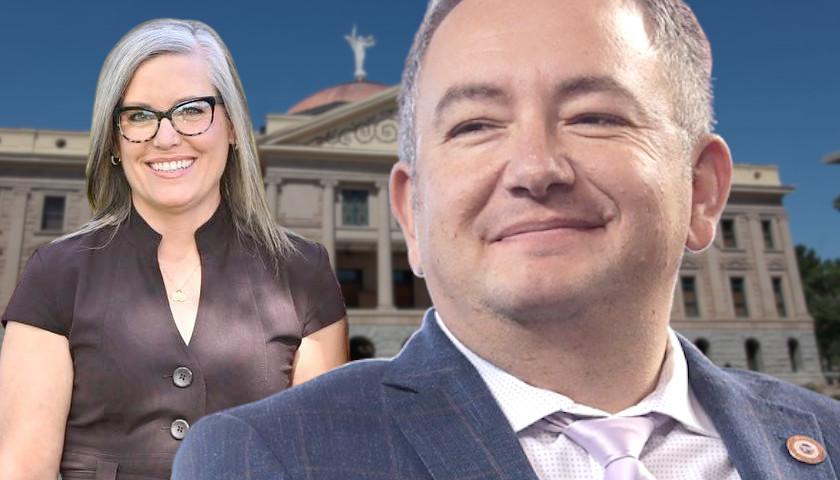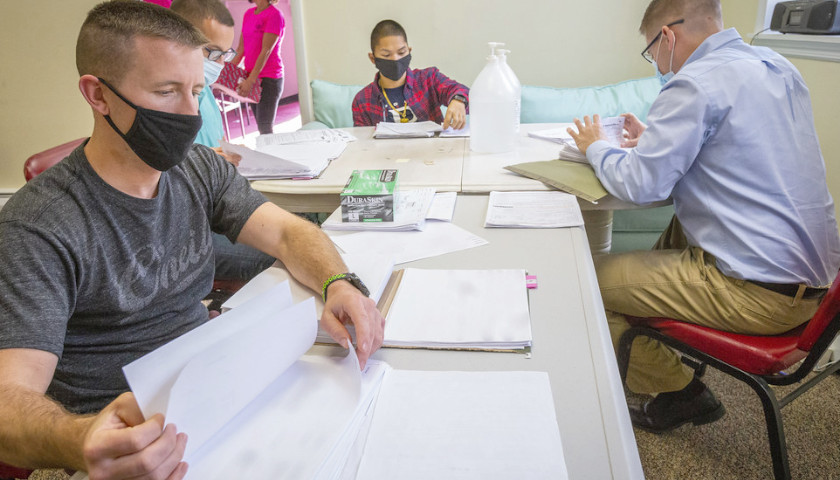Among the nearly 100 bills delivered to Governor Katie Hobbs (D) by the Arizona State House on Monday is one relating to judge retainment elections.
House Bill (HB) 2757, sponsored by House Speaker Ben Toma (R-Peoria), addresses judges from the Arizona Court of Appeals (ACOA), which has two divisions, one in Phoenix and the other in Tucson. The ACOA comprises 28 judges, with 19 in Division 1 and nine in Division 2. Under current law, these judges are first appointed by the governor for an initial term of two years, but after that point, judges can only retain their position if approved by the public in an election. However, the only citizens who can vote to keep an ACOA judge are those within the court’s division. So, when a Division 2 judge is up for election, only Pima, Pinal, Cochise, Santa Cruz, Greenlee, Graham, and Gila County residents can make that decision.
If Toma’s bill becomes law, it would remove the county-based restrictions and require that everyone in Arizona consent to judges being kept by the court in statewide elections. The bill passed its final reading on the House Floor along party lines. State Representative Alexander Kolodin (R-Scottsdale) spoke in the bill’s favor Monday, stating it was about preventing voter disenfranchisement.
“These Court of Appeals judges are governing without the consent of the governed. They are governing people who do not have a chance to vote on them, while other Arizonans do. This is a fundamental, Constitutional defect,” Kolodin said, “and this is our chance to fix it.”
As of writing, Hobbs has yet to make a public decision on the fate of HB 2757. However, the Arizona-based Goldwater Institute (GI) stepped in Tuesday, sending Hobbs a letter urging her to provide a signature of approval.
In this letter, GI senior attorney Scott Day Freeman, vice president of Litigation Jon Riches, and special counsel Andrew Gould argued why the current law is at odds with the state Constitution. That being all of the ACOA judges can render legally binding opinions that could affect the entire state. Also, the law allows cases to be transferred between the divisions “in order to equalize caseloads” between the two.
They argued that the ACOA is the “last resort for the majority of Arizona litigants.” Because cases can move between divisions, a litigant may be under a judge in a division they had no voting power to decide.
As for the state Constitution, Article II § 21 reads that all “elections shall be free and equal” in the state. The GI argued that an election could not be considered “free and equal” if voters could have their voices restricted based on their residency.
“Existing law does not allow for ‘equal influence’ from voters on the retention of appellate judges,” the group wrote. “HB 2757 corrects this problem by ensuring all voters in this state get a vote on and an equal say in the retention of judges to the Court of Appeals. That is the proper policy to protect Arizona voters. And that is the proper constitutional course. Consequently, as a legal and policy matter, we urge you to sign HB 2757.”
Arizonans have the right to keep all their judges accountable—but under existing law, they can’t.
Goldwater is urging @GovernorHobbs to sign HB 2757, which ensures all voters have an equal say in the retention of all judges to the AZ Court of Appeals: https://t.co/0A8f6AcY0F
— Goldwater Institute (@GoldwaterInst) May 16, 2023
The Arizona Sun Times contacted Hobbs’ office for a response but did not hear back before press time.
Furthermore, the GI shared that Arizona almost did not become a state because of its desire to hold the judiciary branch accountable. When Arizona attempted to achieve statehood, President William Howard Taft vetoed the motion, stating he did not like that the state constitution allowed for the recall of judges. The provision was removed, and Arizona became a state. However, the first state Legislature immediately introduced a constitutional amendment to reimplement the provision. In 1912, voters overwhelmingly approved it.
– – –
Neil Jones is a reporter for The Arizona Sun Times and The Star News Network. Follow Neil on Twitter. Email tips to [email protected].
Photo “Ben Toma” by Gage Skidmore. Photo “Katie Hobbs” by Katie Hobbs. Background Photo “Arizona Capitol” by Gage Skidmore. CC BY-SA 2.0.





